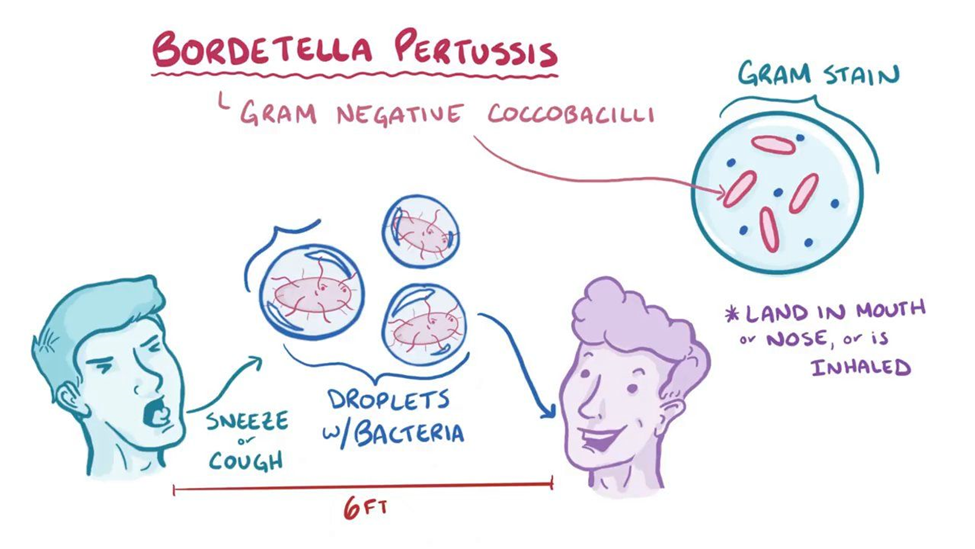A nurse is assessing a 4-year-old child following a surgical procedure. Which of the following pain rating scales should the nurse use?
Oucher pain rating scale
Word-Graphic rating scale
Numeric rating scale
Visual analog scale
The Correct Answer is A
A. Oucher pain rating scale: The Oucher pain rating scale uses pictures of children's faces to represent varying degrees of pain intensity. This scale is specifically designed for young children and can be effective in assessing pain in preschool-aged children who may not yet be able to accurately use verbal descriptors to express their pain.
B. Word-Graphic rating scale: This type of scale presents both words and pictures to represent different levels of pain intensity. While it may be suitable for older children who can understand and use words to describe their pain, it may be less effective for a 4-year-old child who is still developing language skills.
C. Numeric rating scale: Numeric rating scales typically ask the child to rate their pain on a scale from 0 to 10, with 0 representing no pain and 10 representing the worst pain imaginable. While this scale may be appropriate for older children, it may be challenging for a 4-year-old to understand and use numbers to describe their pain.
D. Visual analog scale: Visual analog scales typically consist of a line with endpoints labeled "no pain" and "worst pain imaginable," with the child asked to mark or point to the spot on the line that represents their pain level. While this scale may be suitable for older children and adults, it may be too abstract for a 4-year-old child to understand and use effectively.

Nursing Test Bank
Naxlex Comprehensive Predictor Exams
Related Questions
Correct Answer is D
Explanation
A. "Apply a dry gauze dressing twice per day."
This instruction may not be necessary for a hypospadias repair procedure. Typically, the surgical site will have a dressing applied immediately after the surgery, but ongoing dressing changes may not be required once the infant is discharged. It's essential to follow the specific postoperative care plan provided by the healthcare provider.
B. "Perform hourly measurements of the infant's urinary output."
Hourly measurements of urinary output may not be necessary unless specifically instructed by the healthcare provider due to concerns such as urinary retention or dehydration. However, regular monitoring of urinary output as part of routine care may be appropriate.
C. "Offer the infant 12 to 18 ounces of fruit juice daily."
Offering 12 to 18 ounces of fruit juice daily to a 6-month-old infant is not recommended. Introduction of fruit juice should be gradual and in small amounts, following guidance from healthcare providers and infant nutrition guidelines. Excessive fruit juice consumption can lead to gastrointestinal issues and may not be suitable for all infants.
D. "Avoid giving the infant a tub bath until the stent is removed."
This instruction is appropriate. After hypospadias repair surgery, a stent or catheter may be placed to aid in healing and ensure proper urine drainage. It's essential to follow healthcare provider instructions regarding bathing and hygiene to minimize the risk of infection and to ensure the stent remains in place until it is ready to be removed.
Correct Answer is A
Explanation
A. Droplet:
Pertussis is primarily transmitted through respiratory droplets when an infected person coughs or sneezes. Droplet precautions involve placing the child in a private room or with another child with the same infection. Healthcare workers should wear a mask or respirator when entering the room to protect against droplet transmission.
B. Contact:
Contact precautions are used for infections that can be spread by direct or indirect contact with the patient or their environment. Pertussis is not typically spread through contact with contaminated surfaces or objects.
C. Airborne:
Airborne precautions are used for infections that are transmitted through small droplet nuclei that remain in the air for long periods. Pertussis is primarily transmitted through larger respiratory droplets rather than tiny airborne particles.
D. Protective environment:
Protective environment precautions are used for patients who have weakened immune systems, such as those undergoing bone marrow transplants. These precautions are not applicable for a child with pertussis.

Whether you are a student looking to ace your exams or a practicing nurse seeking to enhance your expertise , our nursing education contents will empower you with the confidence and competence to make a difference in the lives of patients and become a respected leader in the healthcare field.
Visit Naxlex, invest in your future and unlock endless possibilities with our unparalleled nursing education contents today
Report Wrong Answer on the Current Question
Do you disagree with the answer? If yes, what is your expected answer? Explain.
Kindly be descriptive with the issue you are facing.
